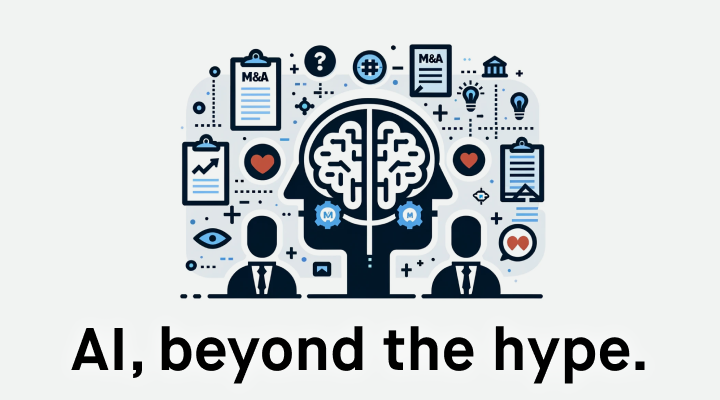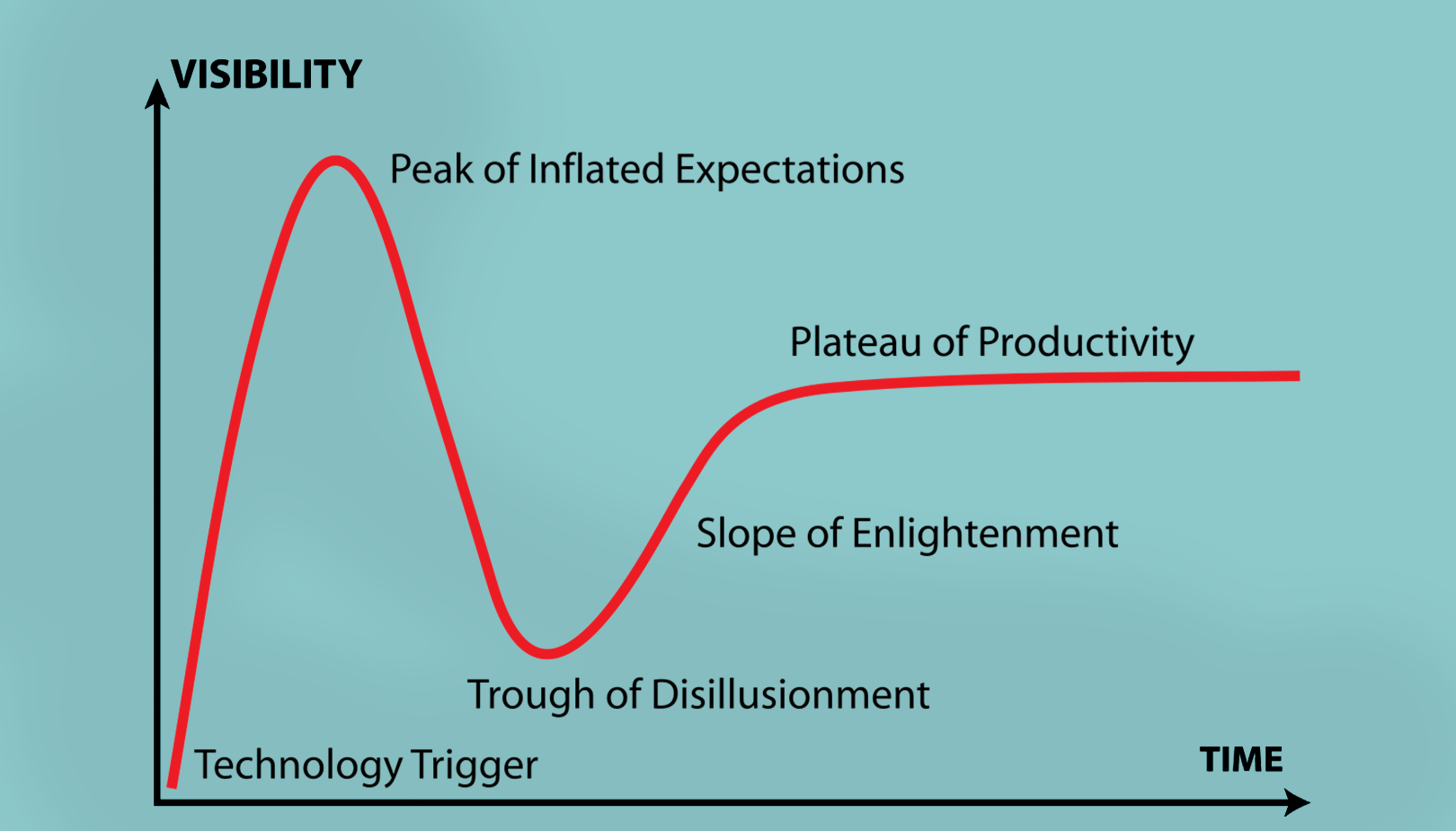AI, beyond the hype
With all the hype around AI, its application in M&A stands out, streamlining processes and improving decision-making. Virtual Vaults applies AI wisely, ensuring that its M&A platform remains at the forefront of innovation.

In the last couple of years everyone started talking about AI. We are concerned about deep fakes, discussing creative ownership over images and we see videos being generated with just a few words. Also, some are worried that AI might take our jobs or make entire companies obsolete! If you completely ignore the trend, it just might do that. Our mission at Virtual Vaults is to empower dealmakers with our continuously enhanced M&A productivity platform. We cannot ignore AI, neither should you.
Some Context
The term AI is pretty wide, and a real specialist can lecture you on neural networks, machine learning, and the difference between generative adversarial networks and transformer based models. But I know only the tip of the iceberg and will try to stay in my lane.
When we are talking about AI, currently we are mostly referring to Generative AI and Large Language Models such as GPT. The 'Generative' addition is important here, this technology will help you to create something out of an input of just a few words. This input, a so-called prompt, will be fed to a pre-trained model that will generate some output, this could be text, images or video.
We could already successfully create discriminative models specifically trained for a purpose for a long time, it is all around you. The generative AI that we suddenly see is built on top of more than half a century of research but has only become practical recently. The reasons behind that are the massive scale of cloud computing available now, combined with easy online access to the world's knowledge.
Noise and nonsense
Generative AI has a high “wow” factor, and it is easy to get caught up in the hype. This hype creates a lot of confusion and leads to many applications that offer little real value. Companies are racing to sprinkle AI on their features or even rebrand existing ones. Companies were even founded on a mere wrapper around OpenAI’s ChatGPT. As we move through all five phases of the Gartner Hype Cycle - the model that illustrates the maturity, adoption, and social application of specific technologies - we can begin to focus on concrete and valuable opportunities.

Threat & opportunities
This technology is powerful, and like Uncle Ben said: with great power comes great responsibility. If you are an end user or even if you are building a platform, the approach to how you apply AI can be very different. We see products being created for very serious business applications, such as generating contracts. These products are usually built around a very specifically trained model. The data used to train these models is in most cases not public information but existing customer data. As a result, the risk of leaking some of these data is quite real. Imagine generating a contract and someone’s name or some other detail appears in it.
There is a danger in letting the technology do all the work, if you let it generate content it will be based on everything the model has been trained on. This might mean that you get yourself into a gray area because of creative ownership or intellectual property. We have also seen Air Canada get into trouble because their chatbot was making up the rules and promising refunds.
Tech companies are currently introducing ‘co-pilots’ everywhere. This is a safer strategy because it acts like an add-on, a productivity tool, even the name suggests that the user is still responsible. There is still a chance that this tool will provide you with information that is not factual, this technology predicts ‘the answer you might want’, but it does not really think!
AI and M&A?
At Virtual Vaults, we continuously develop and enhance our M&A lifecycle platform. It offers a set of online productivity and collaboration tools, with its Virtual Data Room as the most well-known. How could generative AI help us prepare and execute a successful deal for all parties involved? The power of these models lies in their 'understanding' of text. Especially text written by humans has always been a big challenge for machines to process. Basically, everything that happens on our platform is about exchanging documents in a secure way. This means that this technology will make a difference, we are in an excellent position to speed up the process and improve quality.
Our responsibility is to be a neutral and secure place to exchange a lot of sensitive details. We will use this AI to find Personal Identifiable Information in the thousands of uploaded documents and suggest redactions. Next to this we are finding ways to generate red flag reports almost instantly. Our strategy is to help you navigate a large set of data quickly and thoroughly while you make the important decisions.
One of the bigger challenges we see in the near future is that bigger companies will build their own tools and train their own models. These can be very powerful in a specific area, but how would you provide access to the information to those tools? The data (documents) would need to move to the model, or the model needs to move to the data. We strive to be at the forefront of these developments as they unfold.
Trust and Security
Prototypes are easy to create, but scalable and secure implementations are hard. Security, privacy, and tenant separation are concerns that are, and should be most important for a SaaS solution like we build. From the beginning Virtual Vaults partnered with Microsoft, building our platform on Cloud Native technology. Using all the latest developments of the Microsoft Azure Cloud gave us the tools to build functionalities quickly and scale in a way that was impossible for a start-up before.
Because of the partnership between Microsoft and OpenAI we also have direct access to all the latest developments. Microsoft takes privacy and security very seriously and provides us with building blocks that are designed in a way that aligns with our values. Next to the OpenAI offering in Microsoft Azure we also benefit from the extensive Cognitive Services Suite.
What about the jobs?
But will the current generation of “AI” take our jobs? Unless you ignore it, AI won’t take your job. But it can do a lot of your work. What it can do is help you navigate large amounts of data quickly and point out the important and risky things. It will give you false positives and will miss things, almost like humans do. If it is important enough, we commonly do not trust one person for the job, so why fully trust a machine?
Phase 5: Plateau of Productivity
Your productivity will increase, if we look at our statistics it is obvious to see that priorities are made, and some parts of a data collection are better investigated than others. Would it not be nice that you get almost instant flagging of everything that might be important? Redact Personal Identifiable Information without even seeing it? We see a future in M&A where dealmakers can direct their attention to where they are most valuable. A deal of any size deserves the diligence we only see in the top tier now.
Your actual day-to-day work will change, but in a good way! You will spend less time reading through irrelevant documents, you will be able to focus more on your expertise. It will be the job you tell people you do. Machines are here to help but they cannot take responsibility, let people make the important decisions.
As we are working on empowering dealmakers with advanced and secure tools, we also invite you to experience our Data Room platform firsthand. To discover more, do not hesitate to request a demo!
